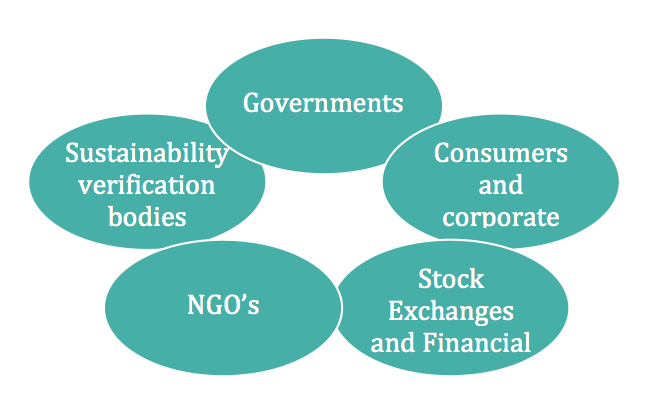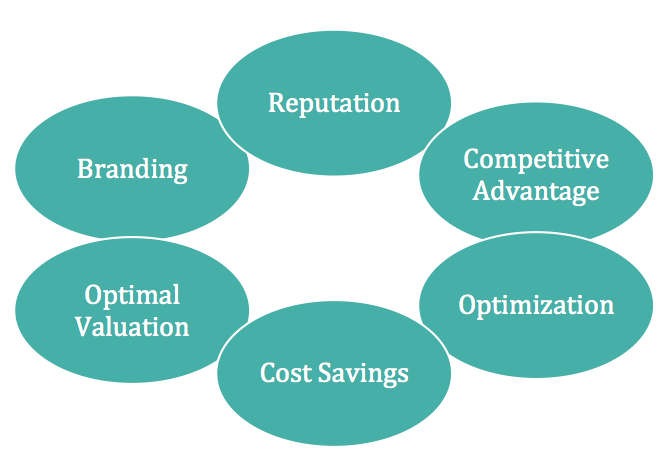
I’m trying to get a grip on this topic. Here’s the notes from my research + my initial considerations.
___
From https://www.forumforthefuture.org/net-positive
NPB is a new way of doing business which puts back more into society, the environment and the global economy than it takes out.
From: https://www.theguardian.com/sustainable-business/business-net-positive-how-measure
To put it another way: the natural world and society should be better off with companies than without them.
Dat gaat dus beyond ‘net zero’.
Bedrijven mensvriendelijker + milieuvriendelijker maken.
What does success look like? Measurable KPI’s met? Or new mindset of continuous self-improvement and high ethics?
From https://www.theguardian.com/sustainable-business/business-net-positive-how-measure
What does a net positive impact on society look like? If a confectionary company gets more kids out running than it does eating chocolate bars, does it qualify? Or take community development. If a village near a mine site loses its history because of forced eviction, but its residents gain new houses in a town nearby, are they better off? Such questions don’t lend themselves to the tick-box answers that net positive maths demands.
My list:
From https://www.theclimategroup.org/sites/default/files/archive/files/Net-Positive.pdf
De wereld moet snel anders; we kunnen niet snel genoeg veranderen zonder de kracht en impact van businesses. Daarom die impact ten goede aanwenden.
From https://scholarworks.umt.edu/cgi/viewcontent.cgi?article=12583&context=etd
…Businesses have developed sustainability initiatives to “be less bad” (e.g., to reduce energy consumption or to reduce the use of environmentally harmful materials). These efforts to use resources efficiently are often described in ‘net neutral’ language; i.e., to offset 100% of electricity emissions by 2030.
Several papers have argued that the goal of being net neutral does not go far enough; instead, business should find ways to rehabilitate and improve unsustainable circumstances (Birkeland & KnightLenihan, 2016; Cole, 2012; Mang and Reed, 2012; McDonough & Braungart, 2002; Reed, 2007; Waldron & Miller, 2013). These leaders have boldly called for businesses to add value back to ecological systems.
Referred to as net positive or regenerative business, the goal is for an organization to contribute positively to natural capital (soil, carbon, air, biodiversity, etc.) compared to its uses or negative impacts.
Het NPB concept is vol beloften: Nieuwe kansen; Nieuwe relevantie:
—
From https://www.researchgate.net/publication/312250346_The_key_drivers_of_sustainability
The drivers of business sustainability can be varied, however, the most accepted nine drivers include investors, non-government organizations, business customers, resource shortages, consumer preference, ROI of projects, regulations, employee recruitment and retention, and brand equity.
Sustainability platform and services company, Turnkey Group (https://www.turnkeygroup.net/key-drivers-sustainability-role-stakeholders-business-drivers/) describe two categories of drivers of sustainability:
Stakeholders
Who are the main stakeholders that put pressure on companies to invest from a triple bottom line perspective?
Societal stakeholders — such as governments, NGOs, stock exchanges — along with shareholders, investors, trading partners and customers are demanding higher transparency on a company’s ESG performance.

Figure 1: Key drivers on the demand of sustainability reporting
Business drivers
Apart from increasing awareness of climate change, executives understand business benefits of embedding sustainability practices into their companies.

Figure 2: Business Drivers of Sustainability
We can probably add
Consumer drivers:
Individual drivers:
Risk avoidance / Opportunity seeking
Urgency:
From https://www.forumforthefuture.org/net-positive
In 2013, Forum for the Future worked with The Climate Group and WWF to convene the Net Positive Group (NPG).
Members of the NPG included BT, Capgemini, Dell, Greater Manchester Fire and Rescue, Ikea, Kingfisher, Pepsico, SKF, The Crown Estate and TUI Group.
// Yeah… BT, Pepsico, TUI… not really the brands that are well-known from their positive impact… But I guess that doesn’t necessarily take away anything from the ideas. But ‘degrowth’ is probably not a topic on the table 🙂
From https://www.forumforthefuture.org/net-positive
Within a year of inception, the [Net Positive Group] laid out 12 principles that characterise the Net Positive approach, tying together all of the areas in which organisations should act.
On https://www.forumforthefuture.org/blog/net-positive-new-frame-on-sustainability-drive-outcomes we read a smaller set of 4 principles:
Guiding principles
In a busy first year, the NPP has drafted a detailed methodology to support the scoping out and measurement of Net Positive outcomes, and advanced work on a standardised method for developing case studies. It has also formalised four guiding principles that define the Net Positive ambition and which aim to assist companies in devising strategies that go beyond conventional business approaches to sustainability.
These four principles are:
1. Material — focusing on what matters most
Net positive strategies focus on an organization’s greatest impacts on society and the environment as well as its largest areas of unique future potential. These are defined by internal and external stakeholders considering impacts along a company’s full value chain. All material issues must be addressed to achieve net positive — thus a positive impact in one material issue cannot compensate for the negative impact or ‘footprint’ in another material area.
2. Regenerative — creating long-term, sustained and absolute impact
Net positive strategies revitalize the natural world, strengthen social communities, and improve individual well-being. They generate long-term beneficial impacts and do not cause irreversible losses. The positive impacts that are created in one material issue exceed existing negative impacts or ‘footprints’ without loss in other material areas. While net positive is a journey, and progress is recorded, absolute reductions or improvements matter most.
3. Systemic — influencing change across entire systems
Net positive strategies not only catalyse positive change across a company’s value chain — from raw material extraction through the use and disposal of its products and services — but they influence wider social, environmental, and economic systems. This recognizes that a single organization is unlikely to create and sustain positive social and environmental outcomes on its own. Given the dynamism of these systems, the scope and boundaries of a net positive strategy must be continually reassessed to ensure greatest impact.
4. Transparent — sharing progress openly and honestly
Net positive strategies require action, progress, and measurement that are clear, credible, and easily accessible in communications. Attribution of all material impacts — both positive and negative — must be measurable and demonstrable, and where possible, independently verified.
While these principles aim to help set ambition and direction for companies to develop and test their approaches, they will be supported by a practical user’s guide for companies to understand the practical steps to driving a net positive strategy.
Hieronder, bij Strategies lezen we ook over:
Relevant (to the needs of the market)
Resilient (to societal changes)
Responsible
https://scholarworks.umt.edu/etd/11502/
In The Netherlands:
Worldwide:
Are family-owned business more likely to think about the long run?
Or a different profile?
A product strategy from https://scholarworks.umt.edu/cgi/viewcontent.cgi?article=12583&context=etd:
Interface Inc.’s production of carpet that absorbs and stores carbon from the atmosphere by naturally and synthetically converting CO2 into bio-derived carbon and carbon-storing minerals and polymers, respectively (Interface, Inc., 2019),
Kingfisher’s goal of generating more than 100% of its energy from renewable sources by implementing solar or wind energy in all their store locations (Kingfisher, 2018),
Stripe’s goal of more than offsetting 100% CO2 emissions through direct air capture (Anderson, 2019) — a chemical scrubbing process that directly removes CO2 from the outside air (Socolow et al., 2011).
Facilities strategy from https://scholarworks.umt.edu/cgi/viewcontent.cgi?article=12583&context=etd
Design net positive energy buildings, in which more electricity is put back into the grid than is used throughout the building’s lifetime. To do so, building designers must account for the building’s complete life cycle energy including that which is expended during both the construction of the building — something known as its “embodied energy” (Cole and Fedoruk, 2015) — as well as the ongoing operations of the building over its lifetime.
!!! THIS >>>
This complete measurement approach is in marked contrast to most net zero energy measurements which focus solely on accounting for a building’s operational energy usage (Cole & Kashkooli, 2013).
Moreover, net positive buildings must also develop partnerships with energy companies and/or other members of the grid for whom the excess on-site solar or wind energy is provided (Cole, 2012; Cole & Kashkooli, 2013).
From https://www.theclimategroup.org/sites/default/files/archive/files/Net-Positive.pdf
The positive impact is clearly demonstrable if not measurable.
From https://www.forumforthefuture.org/net-positive
The [Net Positive Group] also developed a Net Positive measurement framework to enable outcomes to be measured accurately and consistently, and provided guidance on how to communicate an organisation’s approach in a clear and compelling way.
// Yes, measurement is important. But it’s also complex and boring.
From https://scholarworks.umt.edu/etd/11502/
Two environmental accounting methodologies — emergy analysis (EMA) and life cycle assessment (LCA)
What are the measurement issues associated with evaluating the impacts of those strategies?
Measurement ways you down…
From https://www.theguardian.com/sustainable-business/business-net-positive-how-measure
Astro Teller, head of Google X, the search engine’s research lab, has a neat saying: “It’s often easier to make something 10 times better than it is to make it 10% better.” Net positive plays to that precisely. If an idea has the power to inspire and embolden, does its inherent flaws really matter?
From https://www.forumforthefuture.org/net-positive
Becoming Net Positive requires organisations to be ambitious and plan for long-term success. They have to go beyond risk avoidance and incremental improvements and start to innovate.
From https://scholarworks.umt.edu/cgi/viewcontent.cgi?article=12583&context=etd
Very little literature exists to guide businesses in their pursuit of net positive strategies
From https://scholarworks.umt.edu/etd/11502/
…except for a handful of high-profile corporate case studies, little is known about how companies are developing their strategies to become net positive and if it is even a realistic goal.
Further, little is known regarding the measurements they are using to determine what net positive business practices are.
From https://www.theguardian.com/sustainable-business/business-net-positive-how-measure:
Any movement needs its champions, and net positive boasts a coterie of early cheerleaders, including Kingfisher and Ikea, Coca-Cola, Rio Tinto and BT (on carbon). While they might all mean well, are they on the right track? I wonder.
For starters, the track is narrower than it might be. Coca-Cola, for instance, has boldly gone net positive — but only on water. Likewise, Kingfisher and Ikea are limiting (they’d say “focusing”) their ambitions to forests. Fair enough: companies have to start somewhere and it’s good that they are focusing on their most relevant impacts.
Yet no one is gunning for an all-encompassing net positive badge, which I feel is regrettable. Why the oversight? Perhaps becoming “plc positive” is just too difficult. What possible upsides could a cigarette firm or a coal-fired power producer have that would swing their overall dial from a minus to a plus? Alternatively, maybe the early net positivists just lack ambition.
Either way, it seems as if we are talking about “partially positive” here, which, while better than net negative, seems a halfway house.
From https://www.greenbiz.com/article/why-im-negative-net-positive
…
From https://www.theguardian.com/sustainable-business/business-net-positive-how-measure
Companies will need a strong narrative to get everyone on board with their net positive plans. What story would persuade you to buy in? It’ll need collaboration too. How can business partners and customers be persuaded to work as one on this? Some out-of-orbit Astro thinking wouldn’t go a miss either. Do today’s corporate “game changers” have what it takes, or do we need to look elsewhere for cutting-edge creativity we need?
___
That was an interesting afternoon 🙂